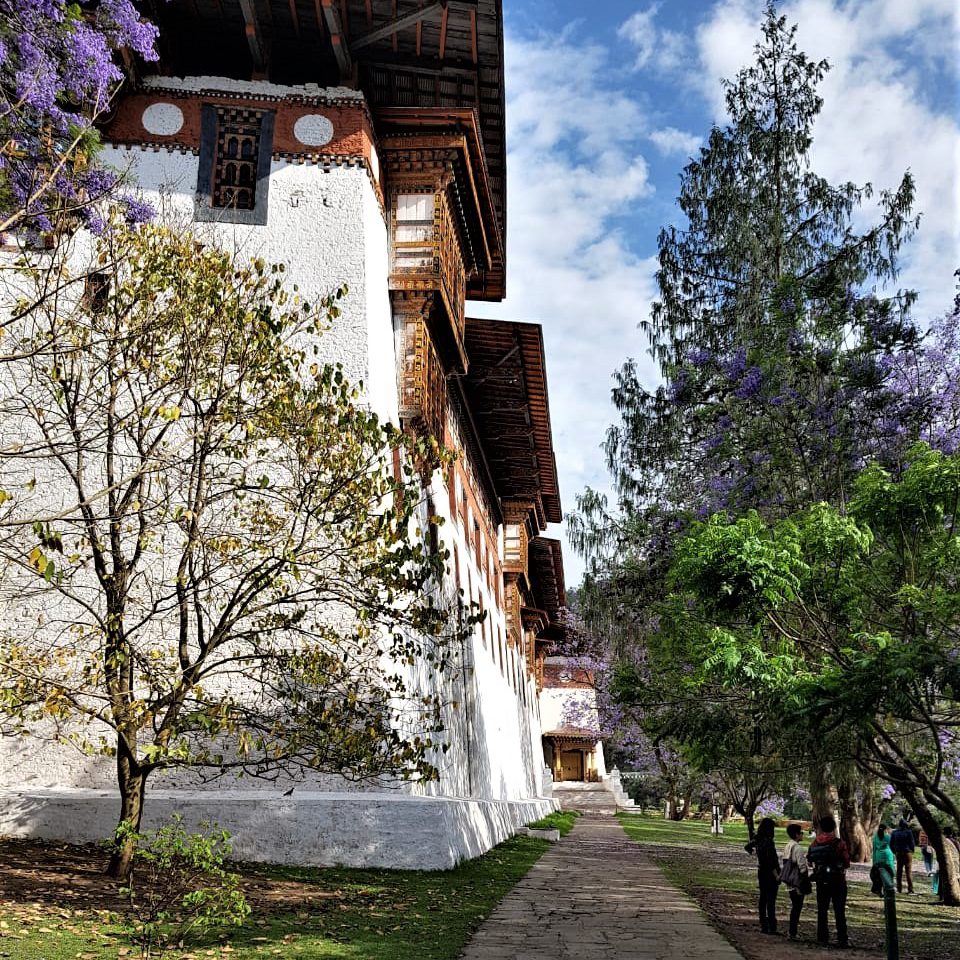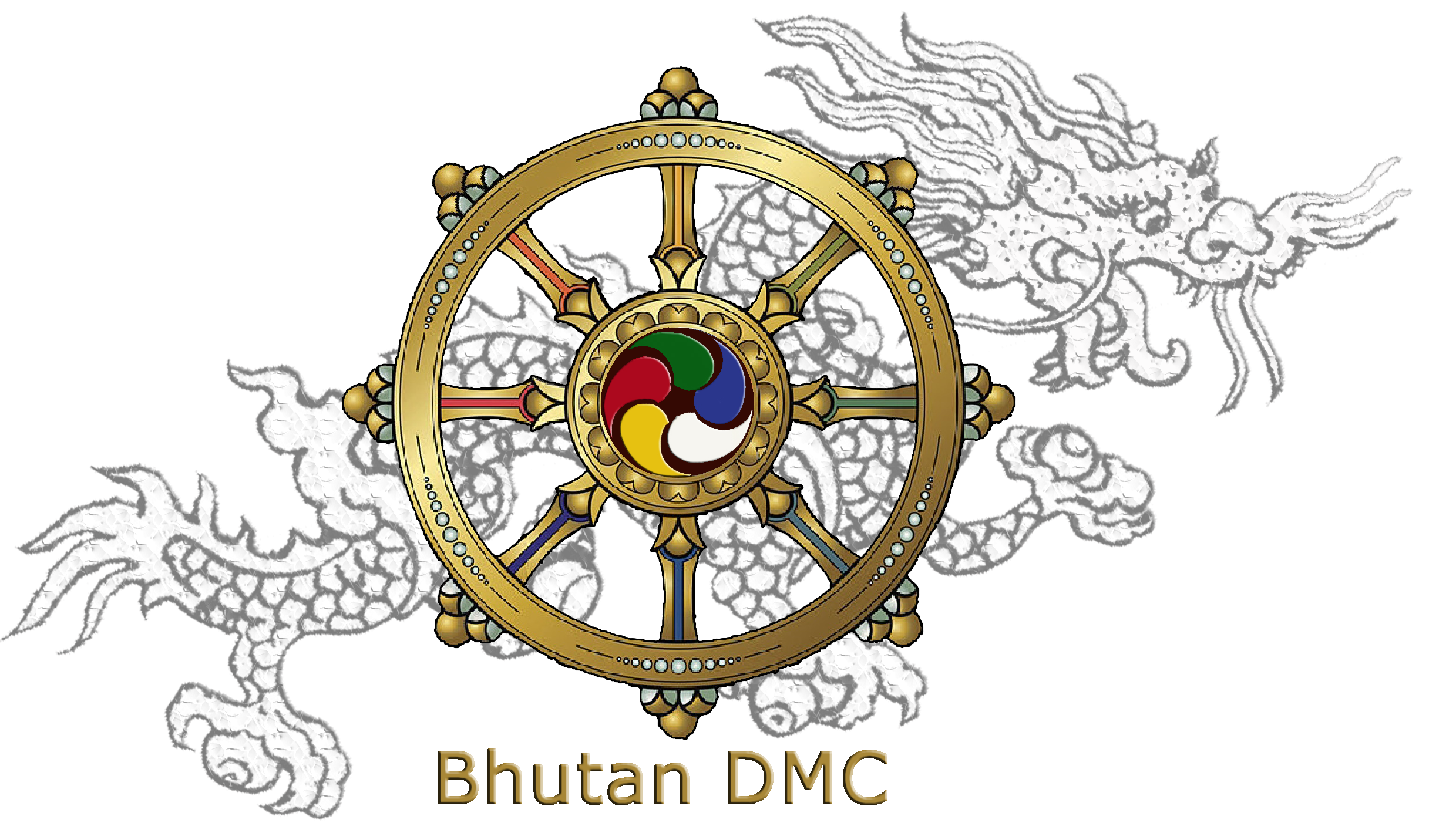Former Capital
of Bhutan
Winter residence
of the Central Monastic Body
Longest Suspension Bridge
in Bhutan

About Punakha
The sub-tropical valley of Punakha served as the capital of Bhutan until 1955 and still it continues to be the winter seat of central monastic body. Blessed with temperate climate and fed by Pho Chhu and Mo Chhu rivers, Punakha is one of the most fertile valleys in the country and produces abundant crops, seasonal fruits and vegetable from its terraced rice fields. The source of town’s Mo Chhu river is in northern hills of Laya in Bhutan and in Tibet. While Pho Chhu river is fed by glaciers in the Lunana region of Punakha valley. After the confluence of these two rivers, the main river is known as Puna Tsang Chhu or Sankosh and flows down through Wangduephodrang, crosses the Bhutan-India border at Kalikhola and eventually meets the Brahmaputra river.
Places of interest in Punakha
Punakha Dzong
Also known as ‘Palace of Great Happiness or Bliss’, it is a massive structure at the junction of Pho Chhu and Mo Chhu rivers. Built in 1637 by Zhabdrung Ngawang Namgyal, the Dzong is 600 feet long and 200 feet wide, with a sprawling six-storeyed rectangular tower. Punakha Dzong is the most beautiful and well-known fortress connected with Bhutan’s historical traditions and continues to be winter home for clergy, headed by Chief Abbot, the Je Khenpo. It is stunning example of Bhutanese architecture, sitting at the fork of two rivers, portraying the image of a medieval city from a distance. The Dzong was destroyed by fire and glacial floods over the years but has been carefully restored and is today, a fine example of Bhutanese craftsmanship. It was in Punakha Dzong, where the first hereditary monarch, Gongsar Ugyen Wangchuck, was enthroned.
Chimi Lhakhang
Perched atop a little hillock overlooking Puna Tsangchu river belt, Chimi Lhakhang is a small 15th century temple famous for its fertility endowments/rites due to the blessing of Lam Drukpa Kuenley. Also known as the temple of fertility, it is widely believed that couples who do not have children and wanting one, if they pray at this temple, are usually blessed with a child very soon. It is a pleasant about 30 minute walk from the road head, through cultivated lush terraced fields as visitors approach the temple sitting serenely at the crest of the hill with only the gently rustling leaves of a gracious tree and the fluttering prayer flags breaking the silence wrapped around it.
While Chimi Lhakhang is renowned for its fertility blessings, it also fulfills the other religious and spiritual needs of the people. Monks from Lhakahng perform rituals and ceremonies in times of sickness and death. They regularly organize prayer ceremonies for the welfare of local community, the nation and indeed all humanity. More significantly, the Lhakhang serves as a centre of monastic education and learning.
Khamsum Yulley Namgay Chorten
It is an approximate two hours interesting round trip walking excursion to this beautiful stupa, passing through village fields and fascinating views all around. The chorten was built to remove negative forces and promote, stability and harmony in the changing world. The chorten dominates upper Punakha valley and offers breathtaking views.
Talo Village
The picturesque village of Talo, scattered along a ridge above the Punakha valley at an altitude of around 2,800m, is known amongst Punakha villages for its neat and clean appearance. Talo Sangnacholing is built on a small plateau at the top of the village, and from there one has majestic view of entire valley and surrounding villages and the high hills beyond Wangduephodrang which marks the gateway to central Bhutan. The women here are particularly known for their beaut. Talo is about an hour’s drive from Punakha.
